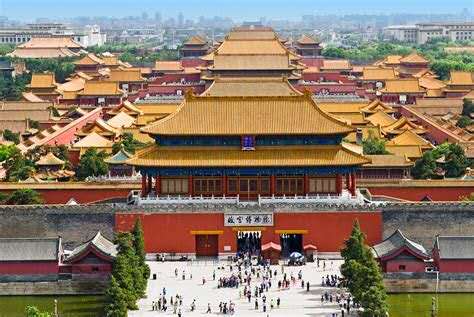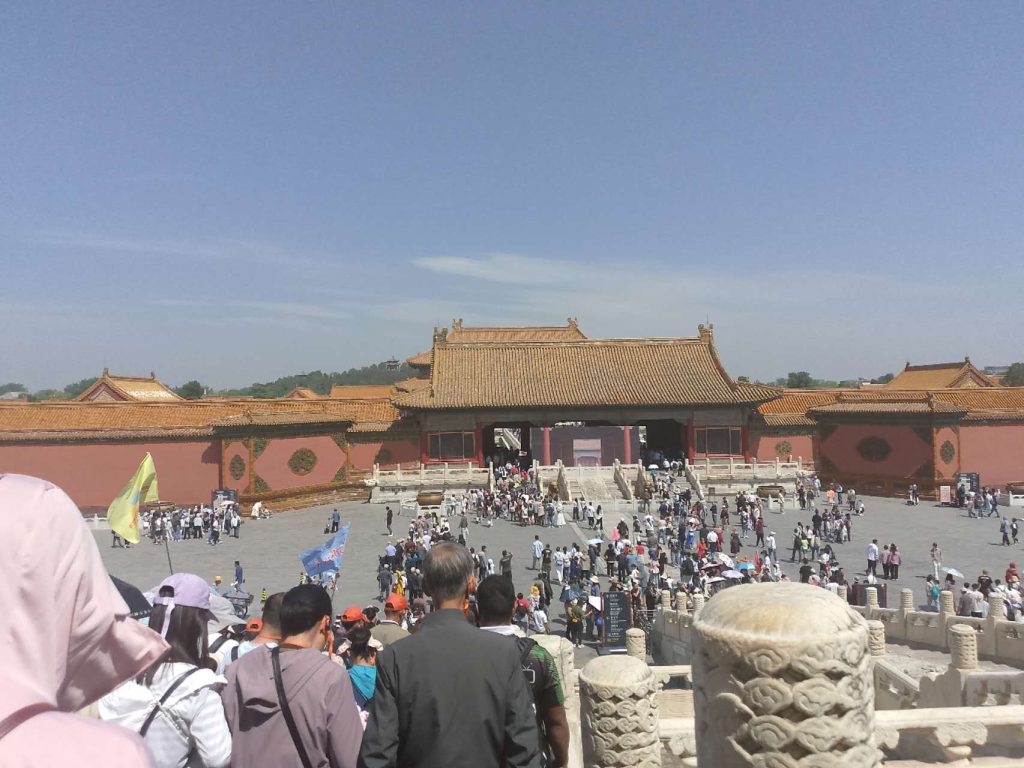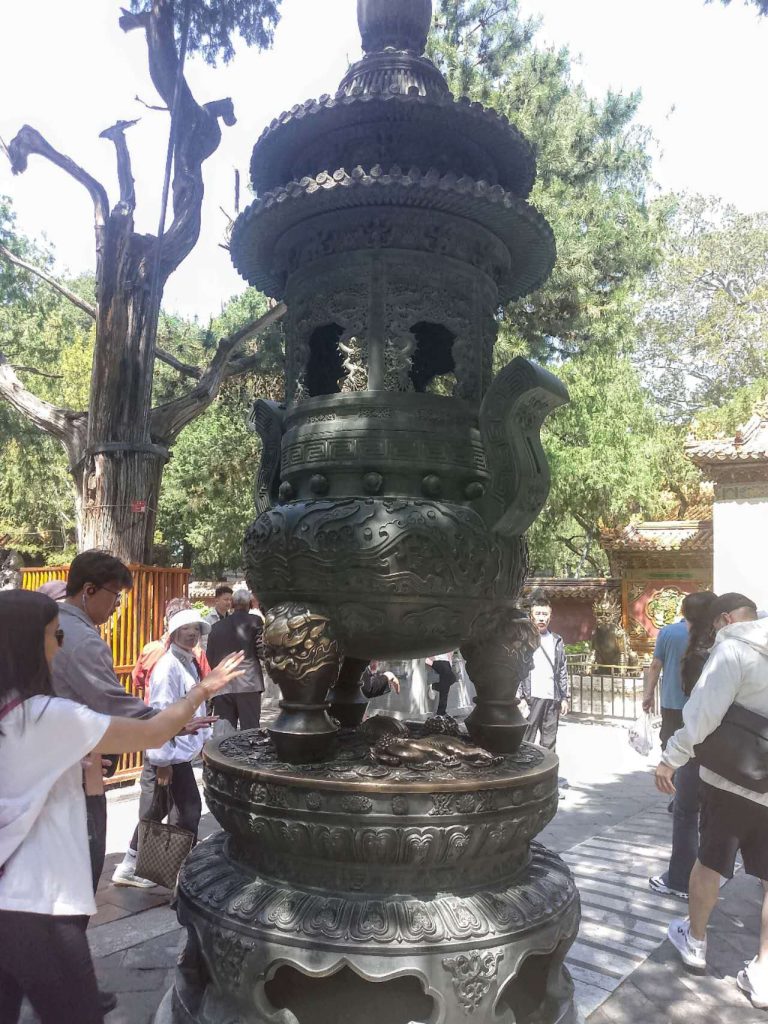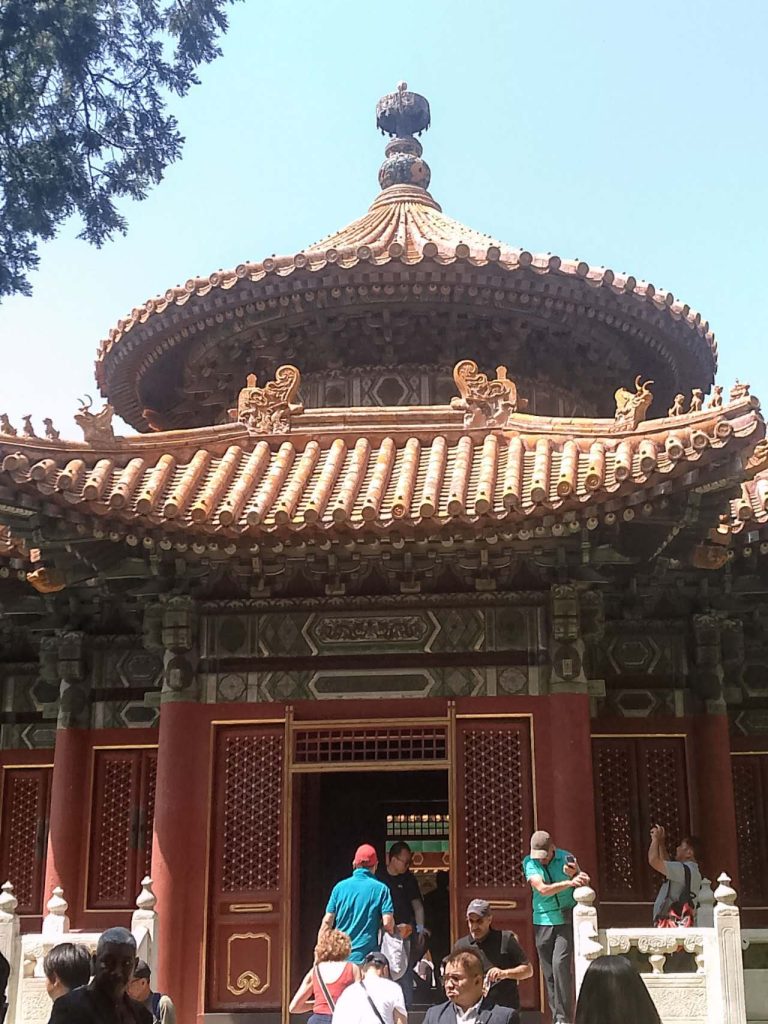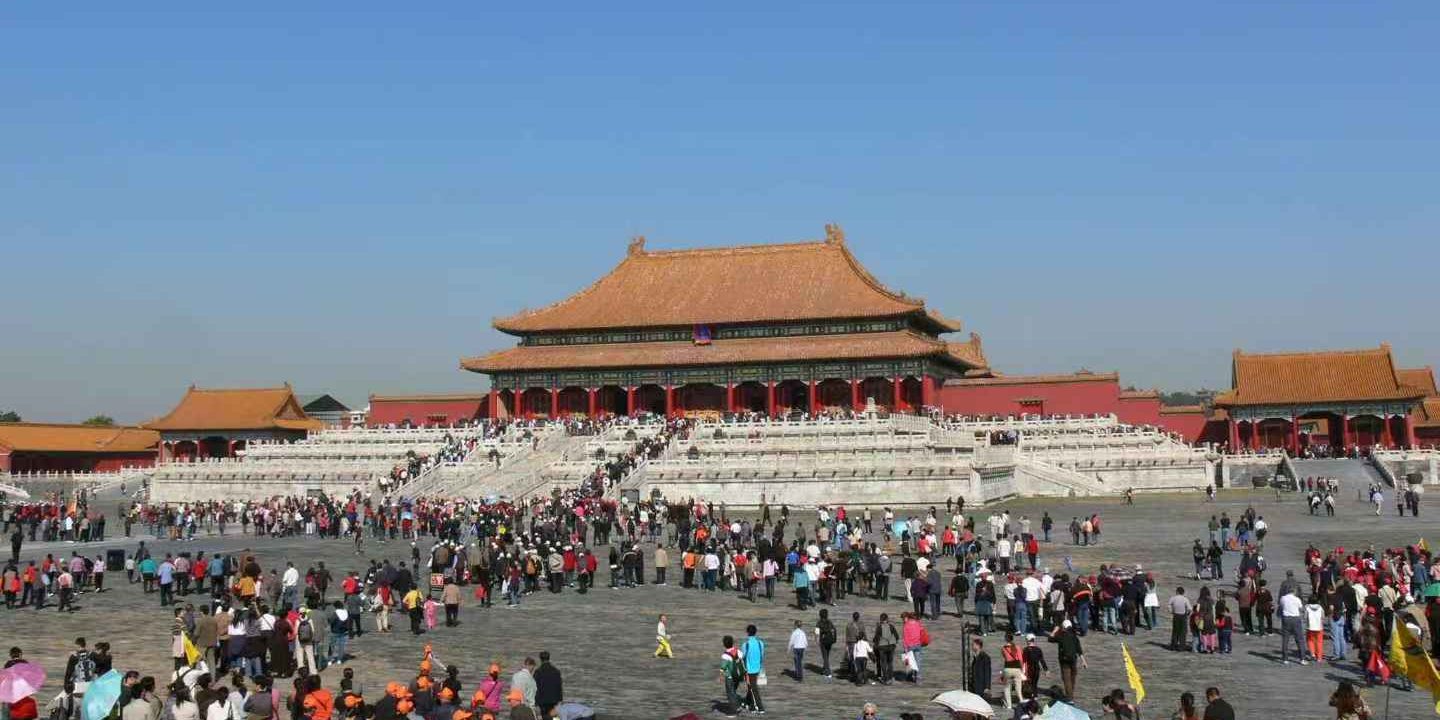ONCE a restricted site for access to the ordinary during the Chinese Ming and Qing Dynasties, Zijincheng, which translates to “Purple Forbidden City” in English, now stands as one of the world’s major tourist attractions, with a daily visitor average of 40,000.
On Tuesday 29 April, I had the privilege of visiting this must see historical site in Beijing again with fellow international journalists undertaking a three-month study tour in China organised by the China International Press Communication Center (CIPCC).
My first visit was in April 2004, and my second enabled me to see the growing international popularity of this site and acknowledge the effort taken by the Chinese government to preserve its historical sites.
The Forbidden City, now well-known as the “Palace Musuem” was inscribed as a World Heritage site in 1987 and has become a tourist hotspot with a daily visitor average of 40,000.
It was constructed during the Ming Dynasty in the early 15th century and served as the imperial palace for over 500 years, housing 24 emperors of the Ming and Qing Dynasties. Its construction was a monumental undertaking that took 14 years, from 1406 to 1420, to complete.
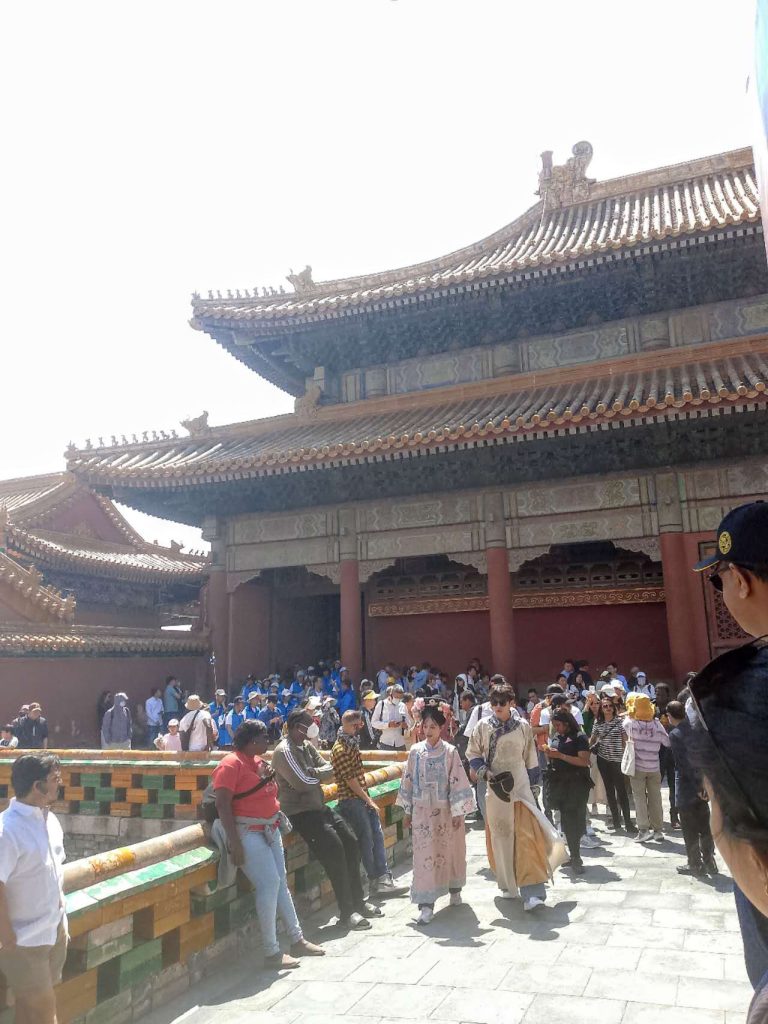
The palace complex covers an area of 720,000 square metres (about 180 acres) , with construction area of 150,000 square metres, consisting of 980 preserved buildings with over 70 halls and palaces. It is the largest palace and wooden structure complex in the world.
The architectural design of this complex is, but a stunning masterpiece of traditional Chinese architecture with symmetrical layout and vibrant colors. It is divided into two main sections – the Outer Court and Inner Court.
The Outer Court, consists of three grand halls and ceremonial spaces, whilst the Inner Court contains the private palace of the emperor, including his bedroom, the Pavilion of Union and Peace, and the room of the empress.
A symbol of imperial power, the Hall of Supreme Harmony is the largest and most important building in the complex. It was the venue for important state ceremonies and imperial coronations. Equally impressive are the Hall of Central Harmony and the Hall of Preserving Harmony, which served as the emperor’s private spaces for preparation for important events in the Hall of Supreme Harmony, and as function spaces for banquets and imperial examination.
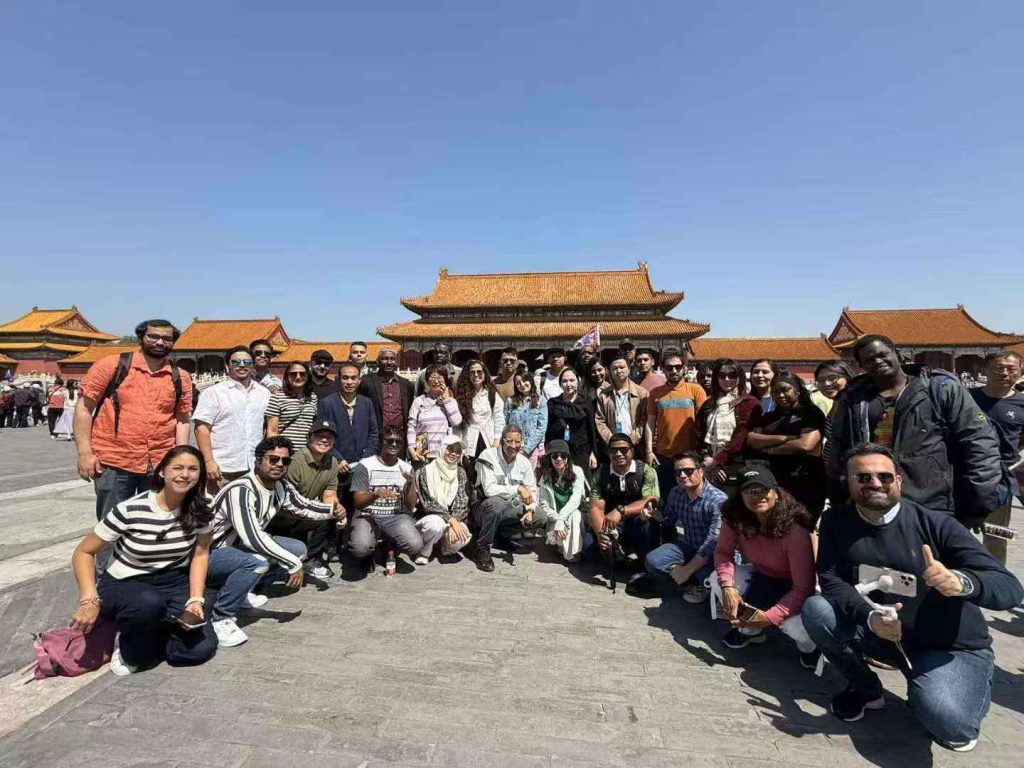
The Forbidden City houses an extensive collection of over 1.8 million cultural artefacts, including paintings, calligraphy, ceramic, jade and imperial treasures with only small number of them on display at any given time.
One of the most famous treasures is the collection of imperial robes and accessories. These intricately embroidered garments, adorned with symbols of power and authority, offer a glimpse into the opulence and grandeur of the imperial court.
The Forbidden City also houses an impressive collection of ancient books, rare manuscripts, and historical documents providing valuable insights into China’s past. Its design was deeply rooted in Chinese ancient’ culture, such as symbolism and principles of Yin & Yang, and Fengshui.
The layout of the complex reflects the belief in the harmony between heaven and earth, with the main halls and palaces aligned along the central axis.
The number 9 is considered auspicious in Chinese ancient culture as it is the highest single digit and odd number. The number 9is prevalent throughout the palace complex.
The intricate carvings, vibrant colors, and symbolic motifs found throughout the Forbidden City are a testament to the importance of symbolism in Chinese ancient culture.
Dragons, phoenixes, and other mythical creatures adorn the palace walls and roofs representing power, prosperity and good fortune, and also serve a practical function in the Chinese culture.
The meticulous attention to detail in every aspect of the architecture and decoration showcases the Chinese reverence for harmony and balance.
The Chinese government has been making significant efforts to preserve and share the cultural heritage of the Forbidden City with the visitors worldwide.
Extensive restoration projects have been undertaken to ensure the longevity of the complex. The Forbidden City has also embraced international collaborations, having hosted exhibitions and cultural exchanges with museums of many countries.
A visit to the Forbidden City provides a unique opportunity for anyone to know and appreciate the cultural diversity of ancient China, and the historical significance of this remarkable UNESCO world heritage site.
By DELI-SHARON OSO
In Beijing, China
